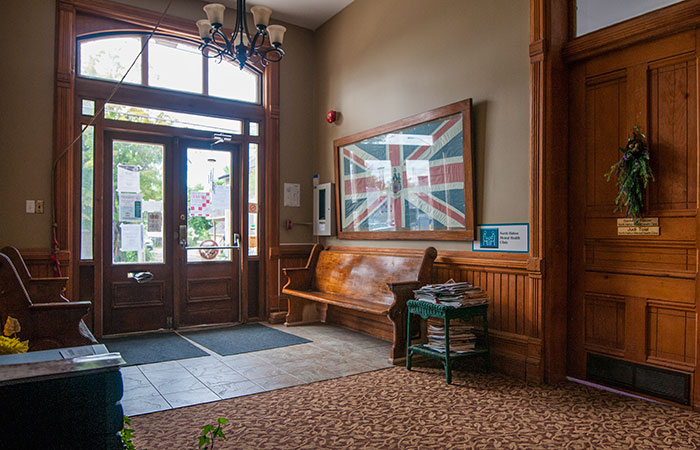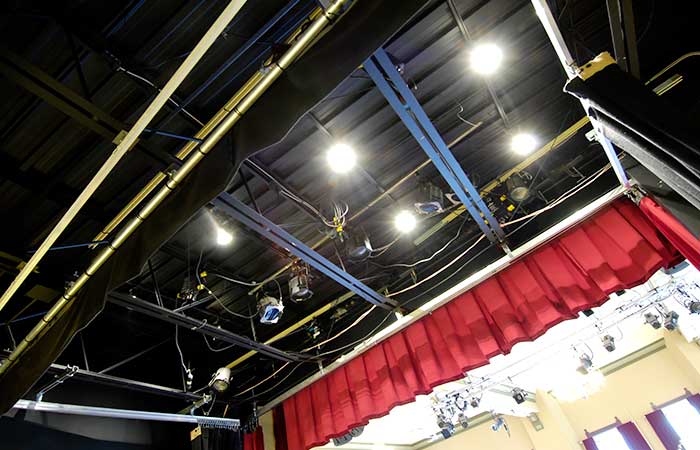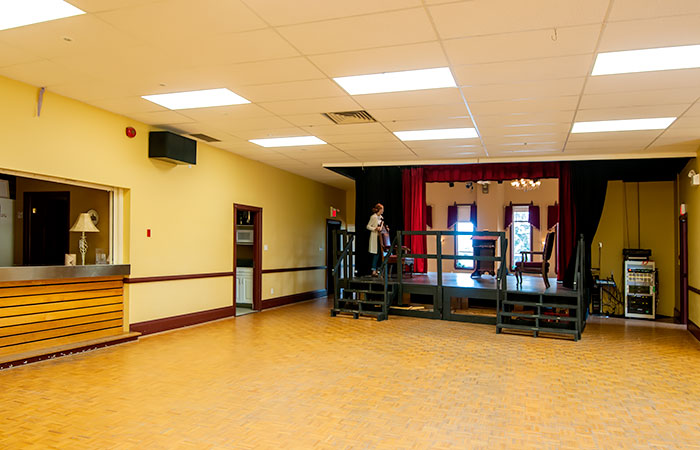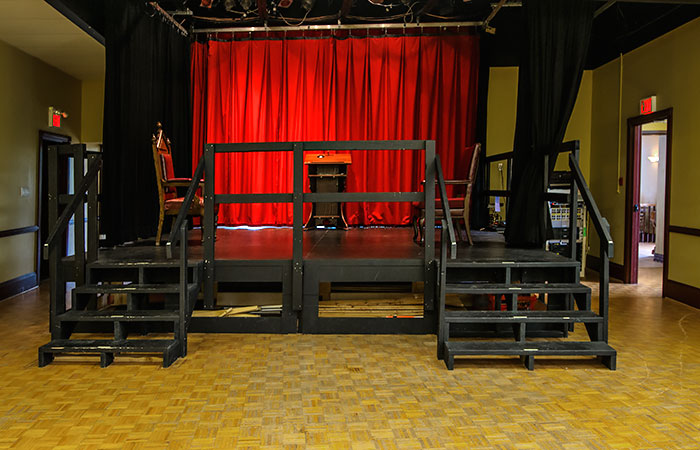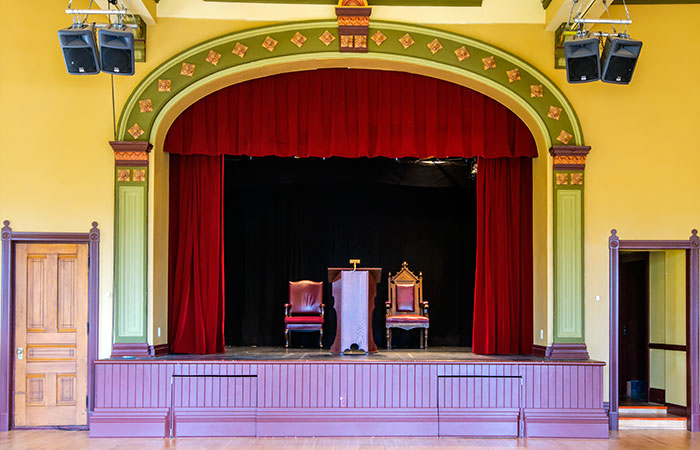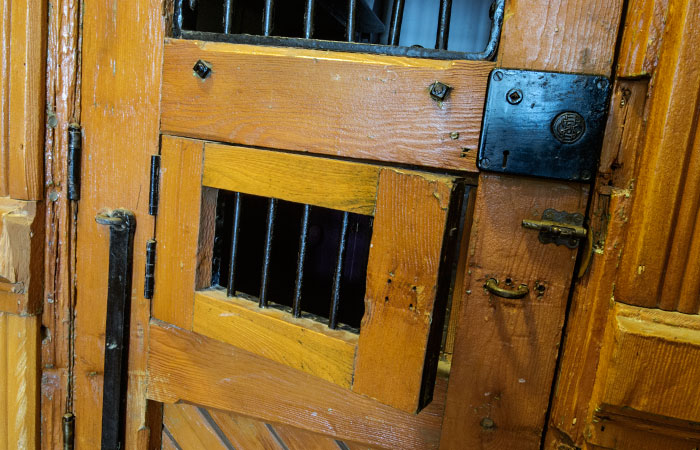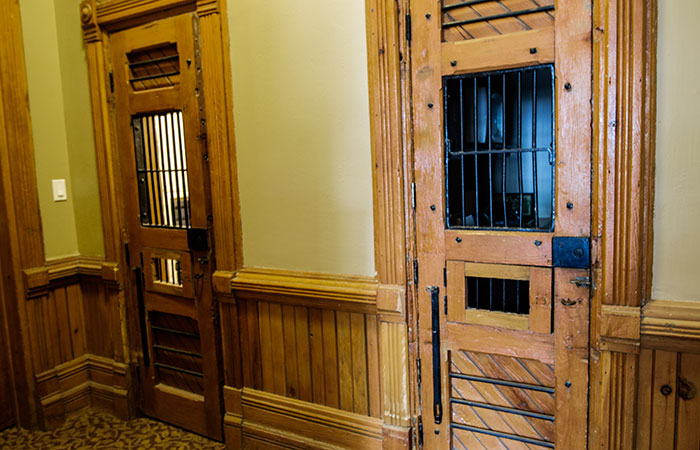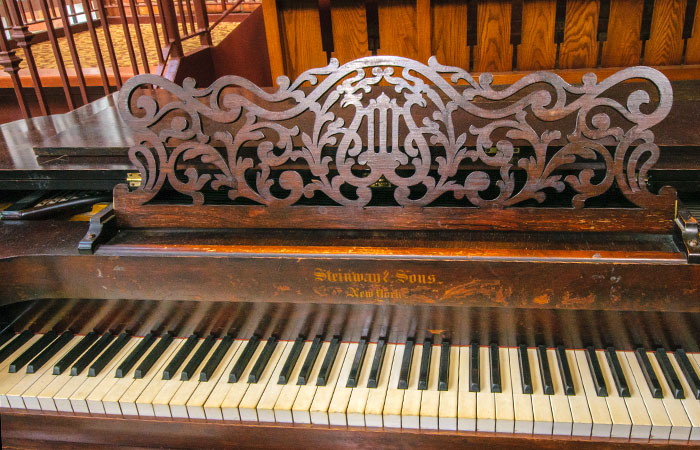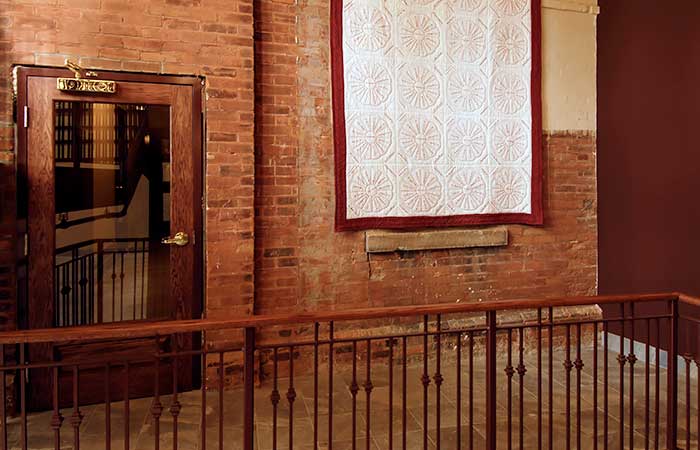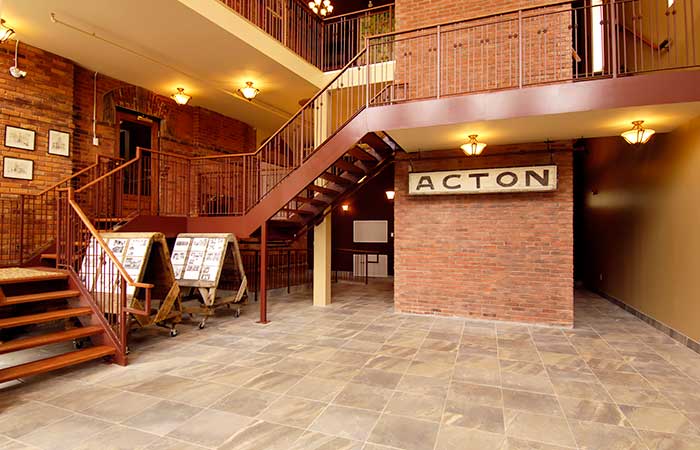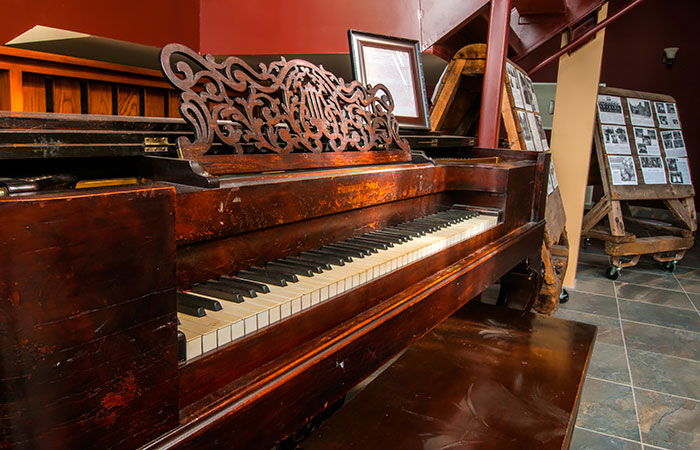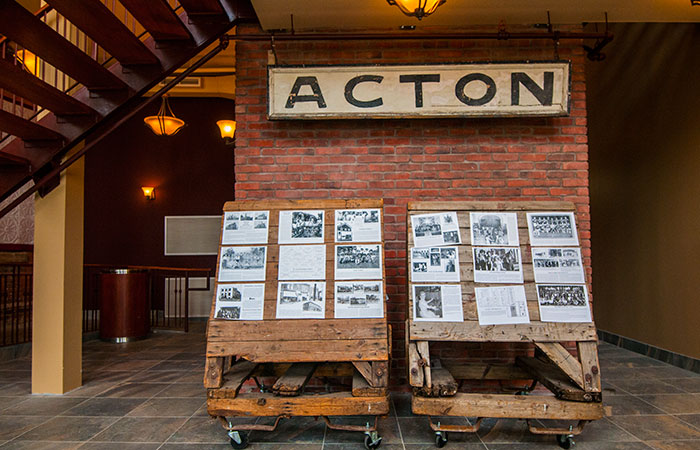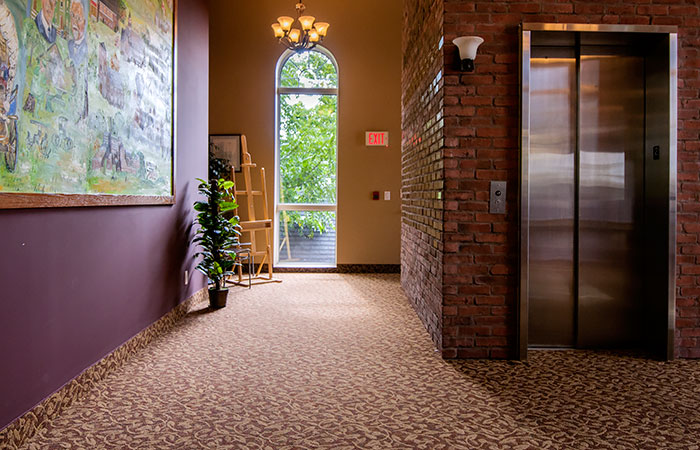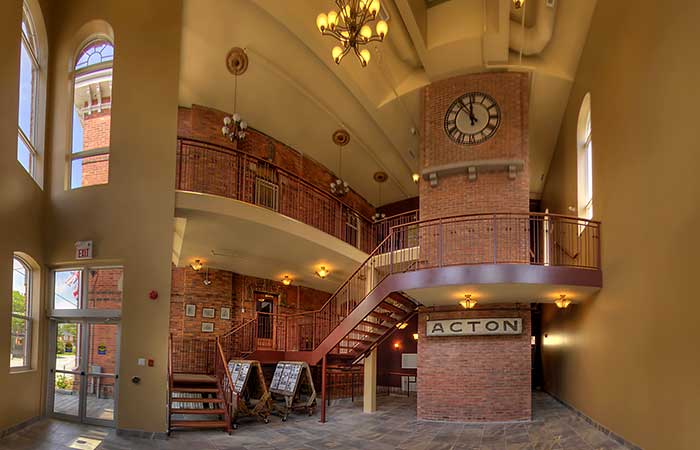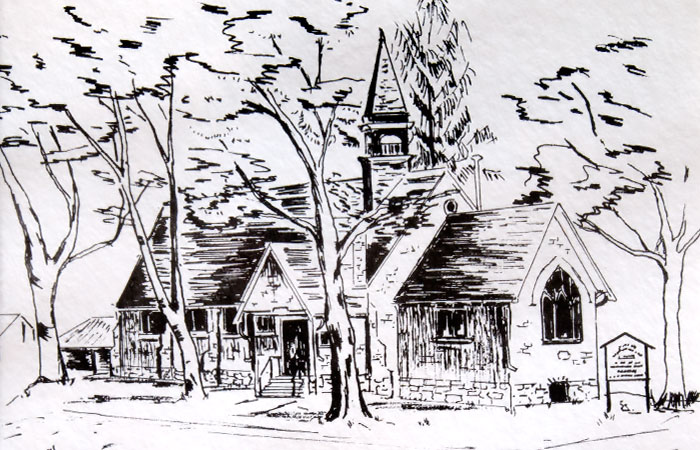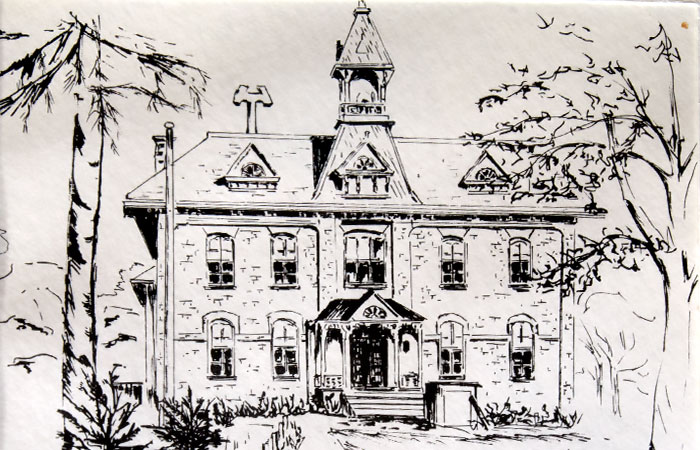The Acton Town Hall is a two–storey Italianate building constructed in 1883. The Town Hall for the former Town of Acton was the centre of cultural and administrative activity in the town. Beautifully restored Acton Town Hall is a heritage showpiece of days gone by.
The historic site boasts modern amenities with antique charm and is the perfect place to hosts variety of events: weddings, anniversaries, workshops, bazaars, art shows, dances, theater performances and much more.
Story of Jimmy – the Acton Town Hall ghost
Rumour has it that Jimmy, the former town hall caretaker, woke up one night in a haze to the smell of smoke and realized that the building was on fire. He quickly determined that the source of the fire was one of the pot-belled stoves in the auditorium. Jimmy formed a one man bucket brigade, running downstairs to obtain buckets of water and ran upstairs to pull the bell tower, alerting the Town of the fire. To this day, it is believed that Jimmy still protects the Hall and those that occupy its space.
The Town Hall hosts many events, including the popular Speaker Series and Christmas Market. Make sure to visit and when you do, check out the Acton Town Hall jail!
Visit website of Acton Town Hall
How the Town Hall was built.
The question of building a Town Hall was raised in print by H. P. Moore, editor of the Acton Free Press, in an editorial 13 January 1881. After a public meeting, it was decided to progress forward by borrowing $5,500 through public debentures. William H. Storey, glove maker and councillor changed his support for the project and resigned in protest. Nevertheless, a vote by all free-holders on 26 August, resulted in a 50:14 victory. After considering five lots, Council chose the property of Josiah Adams on the south- east corner of Bower and Willow, for $500.
In March 1882 the construction was tendered to William McCulla of Brampton, for completion in October. However, the construction of the new hall was to be a trial for the Village. In June the workmen started excavating and laying the foundations. They decided to mortar the stones with water and lime mixed with the excavated loam. The architect, upon inspection, condemned the almost completed foundations, saying they had no more strength than mud. The entire foundation was torn up and re-laid.
In August the same mortar problem caused the rear brick wall to be taken down and rebuilt. Everything was behind schedule and costs were climbing! The plasterers did not begin until October, while old-timers shook their heads at the thought of anyone hoping plaster applied in cold weather would hold. The bell arrived from Troy, New York in November. When the bell finally crowned the new structure, a new debate over when the bell should ring erupted.
Council finally moved into their chambers on 1 March 1883. Between 300 and 400 people filled the upstairs auditorium to enjoy the Acton Glee Club, dramatic sketches, a quartet, string orchestra and soloists. The verdict was that the hall was second to none in the province for beauty and acoustics.


